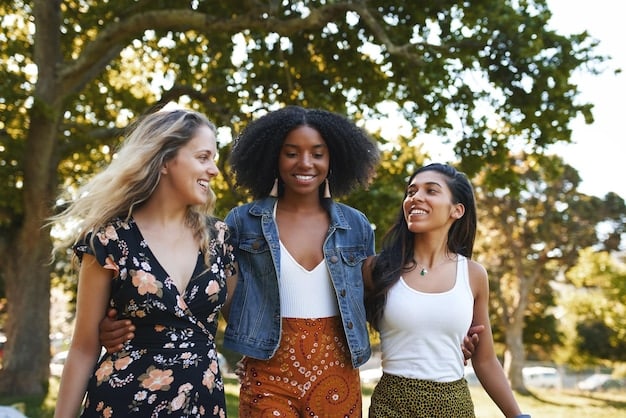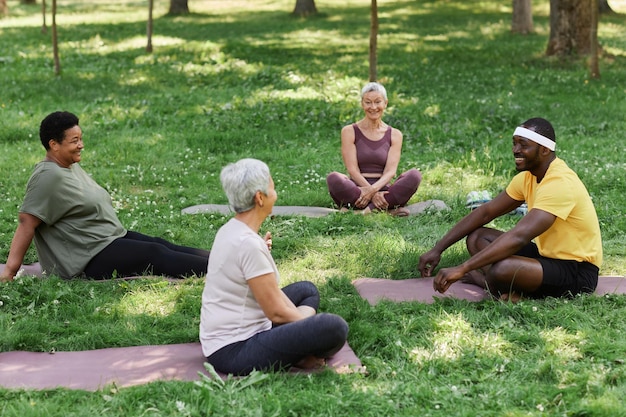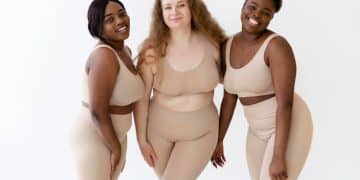Body Neutrality vs. Body Positivity: Finding the Mindset That Works for You

Advertisements
Body neutrality and body positivity are two distinct yet related approaches to body image, with body neutrality focusing on accepting your body as it is without pressure to love it, while body positivity encourages embracing and celebrating your body’s unique features and challenging societal beauty standards.
Advertisements
Navigating the world of body image can feel overwhelming. Two popular concepts, body neutrality vs. body positivity: which mindset works best for you?, offer different paths to a healthier relationship with your body. Let’s explore each approach to help you discover what resonates most with you.
Understanding Body Positivity
Advertisements
Body positivity has gained significant traction in recent years, but what does it truly mean? It’s more than just liking what you see in the mirror; it’s a movement with deep roots.
The Core Principles of Body Positivity
At its core, body positivity challenges unrealistic beauty standards and celebrates the diversity of bodies. It’s about recognizing inherent worth regardless of size or shape.
- Acceptance of all body types: Body positivity advocates for the understanding that every body is good body, irrespective of size, shape, skin tone, gender, and physical abilities.
- Challenging societal beauty standards: The movement seeks to dismantle prevailing notions about what constitutes beauty, promoting inclusivity.
- Promoting self-love and appreciation: It encourages individuals to appreciate their bodies and cultivate self-love, regardless of perceived flaws.
Body positivity also means recognizing that our bodies are more than just objects; they’re instruments of experience, strength, and resilience. It’s about celebrating what our bodies can *do* rather than just how they look.

It’s important to note that body positivity isn’t about ignoring health concerns or promoting unhealthy behaviors. Rather, it’s about approaching health and wellness from a place of self-acceptance and respect, rather than self-criticism.
Exploring Body Neutrality
Body neutrality offers a different perspective, one that emphasizes function over aesthetics. Instead of striving to love your body, it encourages you to simply accept it as it is.
Focusing on Functionality Over Appearance
Body neutrality shifts the focus from how your body looks to what it can do. This can be a powerful way to reduce pressure and improve mental well-being.
- Recognizing your body’s capabilities: Appreciation for the body’s functions, such as breathing. Eating. Moving, and thinking.
- Detaching self-worth from physical appearance: Body neutrality encourages separating personal value from physical traits.
- Reducing pressure to conform to beauty standards: Emphasizing that one’s worth is not dependent on adhering to societal expectations of beauty.
This approach can be particularly appealing for individuals who struggle with body image issues or who find the pressure to always “love” their bodies to be overwhelming. Body neutrality offers a middle ground, a way to make peace with your body without necessarily having to adore it.
Body neutrality can also be a helpful tool for navigating diet culture and fatphobia. By detaching from appearance-based judgment, you can make choices that prioritize health and well-being without being driven by self-criticism or a desire to change your body.
Body Positivity vs. Body Neutrality: Key Differences
While both body positivity and body neutrality aim to improve body image, they differ in their approaches and underlying philosophies.
A Comparative Analysis
Understanding the nuances between these two mindsets can help you choose the one that best aligns with your needs and values.
- Focus: Body positivity emphasizes love and appreciation, while body neutrality focuses on acceptance and functionality.
- Emotional Intensity: Body positivity leans into celebrating one’s body, whereas body neutrality favors a more emotionally detached view.
- Goal: Body positivity aims for enhanced self-esteem, and body neutrality aims for reducing pressure.
Body positivity encourages actively challenging and dismantling negative thoughts and beliefs about your body, while body neutrality promotes a more passive acceptance of your body as it is, without judgment or evaluation.
Ultimately, the choice between body positivity and body neutrality is a personal one. There’s no right or wrong answer. The key is to find the approach that resonates most with you and helps you cultivate a healthier, more compassionate relationship with your body.
Which Mindset is Right for You?
Determining which approach—body positivity or body neutrality—suits you best involves self-reflection and understanding your personal needs.
Factors to Consider
Consider your current relationship with your body, your personal values, and what you hope to achieve in terms of self-acceptance and well-being.
If the idea of loving your body feels overwhelming or unattainable, body neutrality may be a more accessible starting point. On the other hand, if you’re drawn to the idea of actively challenging beauty standards and cultivating self-love, body positivity may be a better fit.
It’s also important to consider your individual experiences and triggers. For some people, focusing on appearance, even in a positive way, can be triggering or perpetuate negative self-talk. In these cases, body neutrality may offer a more sustainable and supportive approach.

Remember, you can also experiment with both mindsets and adapt them to fit your changing needs. There’s no need to commit to one approach exclusively. You can mix and match elements of body positivity and body neutrality to create a personalized path to body acceptance.
Practical Steps to Implement Body Neutrality
Embracing body neutrality involves consciously shifting your focus from appearance to functionality and cultivating a more accepting and compassionate inner dialogue.
Strategies for Cultivating a Body Neutral Mindset
These small changes can make a big difference in how you perceive and relate to your body.
- Focus on what your body can do: Acknowledge the functions of your body.
- Practice gratitude for your health: Expressing thankfulness for your physical capabilities.
- Challenge appearance-based thoughts: Reframing thoughts about your appearance to focus on broader personal qualities.
One practical step is to start paying attention to your self-talk. Notice when you’re engaging in negative or judgmental thoughts about your body, and gently redirect your attention to something else, such as what your body is doing or how it feels.
Another helpful strategy is to focus on activities that make you feel good, regardless of how they affect your appearance. This could be anything from dancing to gardening to spending time in nature. The goal is to connect with your body in a way that feels positive and empowering, without being tied to appearance-based goals.
Integrating Body Positivity into Your Life
Adopting body positivity involves actively challenging societal beauty standards and cultivating self-love and appreciation for your unique body.
Incorporating Positive Affirmations and Practices
Here are some ways to actively promote body positivity in your daily life.
- Practice self-compassion: Treating yourself with kindness and understanding.
- Celebrate your body’s strengths: Acknowledge positive aspects of your body.
- Surround yourself with positive influences: Engaging with media that promotes body diversity.
One powerful tool is the use of positive affirmations. Start your day by looking in the mirror and saying something kind to yourself, such as “I am beautiful,” “I am strong,” or “I am worthy of love and respect.” Over time, these affirmations can help rewire your brain and challenge negative self-talk.
It’s also important to curate your social media feed. Unfollow accounts that promote unrealistic beauty standards or make you feel bad about your body, and instead, follow accounts that celebrate body diversity and promote self-acceptance. Surrounding yourself with positive influences can make a big difference in your body image and self-esteem.
| Key Aspects | Brief Description |
|---|---|
| 💖 Body Positivity | Emphasizes loving and celebrating your body, challenging beauty standards. |
| 🧘 Body Neutrality | Focuses on accepting your body as it is, valuing its functionality over appearance. |
| 🌱 Self-Acceptance | Both approaches promote self-acceptance but through different methods. |
| 💪 Mindset Choice | Choosing the right mindset should align with personal comfort and mental health goals. |
Frequently Asked Questions
▼
The primary goal of body neutrality is to reduce the pressure to constantly love or feel positive about your body; instead, it encourages a more neutral, accepting stance.
▼
Yes, you can. Many people find that their needs change over time, and they may adopt different approaches at various points in their lives.
▼
No, body positivity is not about ignoring health. It’s about approaching health and wellness from a place of self-acceptance and respect, not self-criticism.
▼
Social media can impact body image both positively and negatively, depending on the content you consume. Curate your feed to focus on body diversity and positivity.
▼
Daily practices include positive self-talk, focusing on your body’s capabilities, engaging in activities you enjoy, and practicing self-compassion and gratitude.
Conclusion
Ultimately, the journey to a healthier body image is a personal one, and whether you choose to embrace body positivity, body neutrality, or a combination of both, the goal is to cultivate a more compassionate and accepting relationship with yourself.





